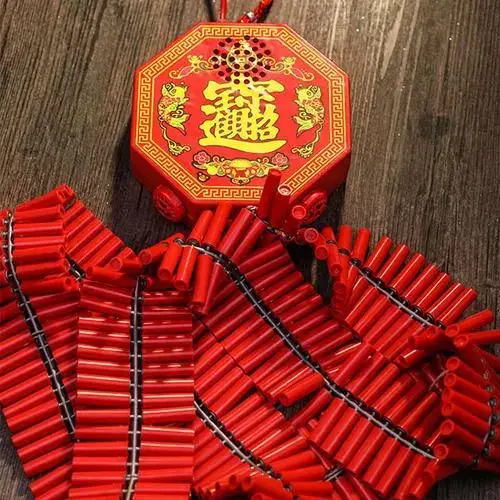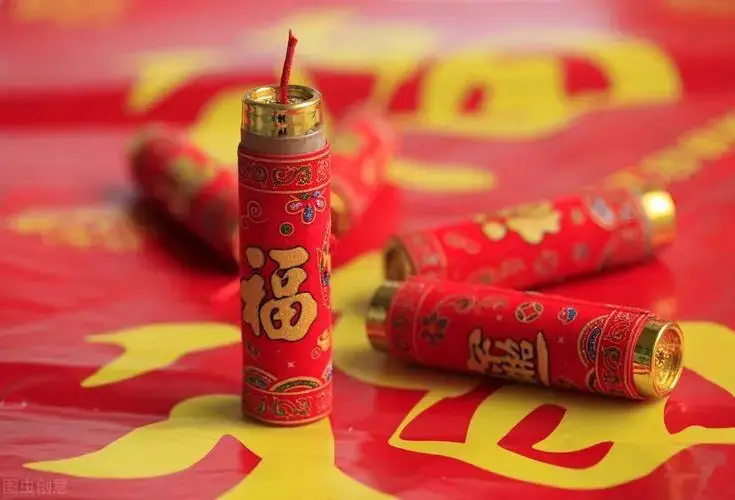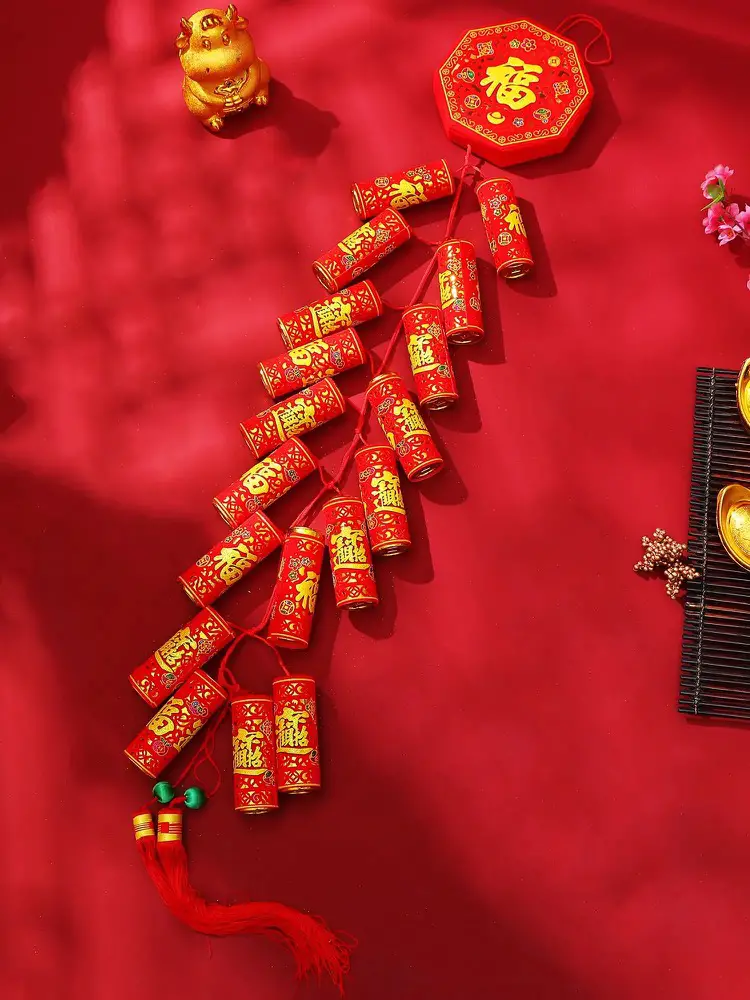Firecrackers are small explosives known for their loud blasts and unpredictable visual effects used during celebrations or entertainment. Everyone enjoys setting off and watching firecrackers, and I’m sure you do too. But have you ever wondered where firecrackers came from? Who invented them? When were they invented? How many kinds exist? What are they made of? Why are they so popular on Chinese New Year? If you want to discover the answers to these questions and learn more, this post has been prepared for you, so keep reading.
What are firecrackers?

As mentioned earlier, firecrackers are small explosives set off during celebrations or entertainment to produce loud blasts and interesting visual effects. Ancient Chinese firecrackers had explosives materials packed tightly in a tube that would explode once ignited. Modern Chinese firecrackers apply the same principle. Over the years, the Chinese firecrackers evolved regarding the production process.
How many types of firecrackers are there?
There are two kinds of Chinese firecrackers; Yibenwanli and Bawangbian. Yibenwanli firecrackers have single packets and shorter detonation times. In contrast, Bawangbian firecrackers are streamers, typically hung from the top of a building and set off from below, lighting up and exploding. The Chinese believe that the purchaser of a Yibenwanli firecracker will gain ten thousand times over, and the purchaser of a Bawangbian firecracker will become prosperous.
Firecrackers History
When were firecrackers invented?

The Chinese firecrackers were believed to have been invented during the Tang Dynasty (618-907 AD) when gunpowder was invented. The predecessor of the Chinese firecrackers, the “heated bamboo,” date back to as early as 200 BCE. When they were invented, the Chinese firecrackers were named “Baozhu,” meaning “exploding bamboo.” Chinese firecrackers are believed to have come from Hunan and Guangdong provinces. During the Song Dynasty (960-1279 AD), several improvements were made to the original firecracker to make it more effective.
Who invented firecrackers?
The invention of the firecrackers is credited to one Li Tian, a Chinese monk from Hunan Province in Liuyang, during the Tang Dynasty. Thanks to the invention of gunpowder, Li Tian created a firecracker that he used to chase away evil spirits and beasts. Today, he is known as the “Father of Fireworks” among the Chinese.
How firecrackers were invented
It is believed that Li Tian invented the firecracker accidentally as he was trying to make a potion. He mixed gunpowder, charcoal, and sulfur, producing a black flaky concoction which he then ignited, causing a colorful explosion. According to Chinese legend, Li Tian once warded off an evil dragon spirit by igniting this mixture in a bamboo shoot.
What are firecrackers made of?
Ancient Chinese firecrackers were made of charcoal, saltpeter, and sulfur stuffed into bamboo tubes and ignited. Later, during the Song Dynasty, bamboo tubes were replaced by paper tubes. These paper tubes were made from the inner lining of the bamboo plant and hardened with buckwheat paste.
These firecrackers further evolved and started being made from plastic/cardboard, with smokeless powder, flash powder, or cordite as the propellant. This is during the 19th century. These firecrackers were considered the earliest form of the modern Chinese firecracker.
What are firecrackers used for?
In ancient China, firecrackers were used for ritualistic purposes. One of the purposes was to drive away evil spirits and beasts. Also, firecrackers were set off during funerals to ensure that the newly departed soul got to the “Western Paradise” safely without stray ghosts hindering it. Years later, firecrackers started to take on a more positive connotation and began being used in joyous events like weddings and festivals.
One of the festivals that Chinese firecrackers were used in is the Qing Ming Festival, a.k.a All Soul’s Day. On this day, firecrackers were ignited to ward off hungry spirits believed to eat food offered to ancestors.
Firecrackers were also used during theatrical exhibitions, especially when fast-moving spear duels and swords were in play. Chinese people believed that firecrackers would chase away mischievous spirits that were notorious for causing accidents during such shows.
Chinese firecrackers were also set off as a sign of prosperity. It’s also because of this that the official opening of a building is accompanied by a well-known personality igniting firecrackers.
Another use for Chinese firecrackers is as an apology. In ancient China, if a conflict was settled out of court, the wronged person demanded firecrackers as a gift, and this signified an apology to them. These firecrackers would be accompanied by red silk threads and red candles.
Why firecrackers on Chinese New Year?

Firecrackers were, and still are, a crucial part of the Chinese New Year. People believe that setting firecrackers off on Chinese New Year’s Eve brings happiness, prosperity, and good luck to them in the coming year. They also ignite firecrackers to say goodbye to the ending year and welcome the New Year.
Also, according to one Chinese legend, a monster named Nian would attack villagers on New Year’s Eve; the villagers discovered that the explosive sound of bamboo scared the monster away. They then started igniting bamboo every New Year’s, and over the years, the bamboo evolved into firecrackers.
Today, firecrackers are still a big deal in China, and they are set off during New Year’s Eve to signify prosperity in the coming year and promote a festive atmosphere.
What do firecrackers symbolize?
In the Chinese culture, firecrackers symbolize good luck and prosperity; no wonder every New Year’s and during many festivals in China, firecrackers are ignited. Also, the red paper from Chinese firecrackers isn’t swept as it is believed that that would be sweeping wealth away.
Firecrackers also symbolized safety as they would be ignited to ward off evil spirits and monsters, thus protecting the people.
Lastly, Chinese firecrackers symbolize joy and merry. During family reunions in China, it is tradition for families to light firecrackers to celebrate and invite their ancestors to the celebration.
Conclusion
Invented hundreds of years ago, Chinese firecrackers are not only entertainment but also a symbol of prosperity, good luck, happiness, and safety. Most of the beliefs attached to firecrackers in ancient China are still held by modern Chinese people. The only thing that has changed over the years is the production process and the components of the firecrackers.